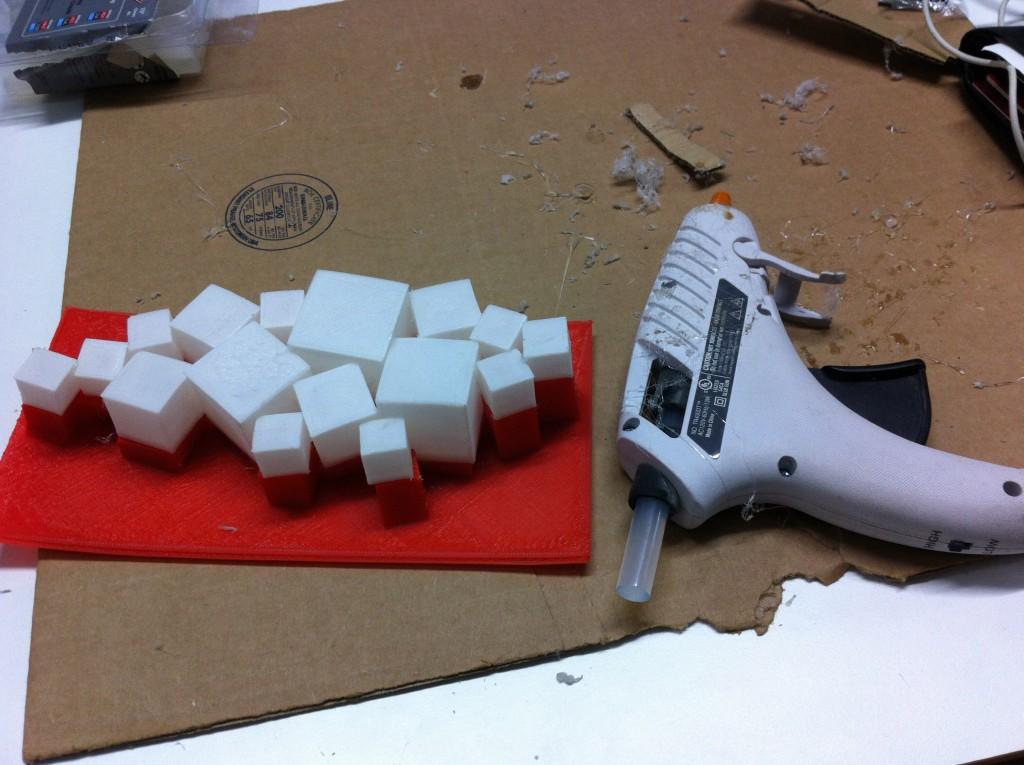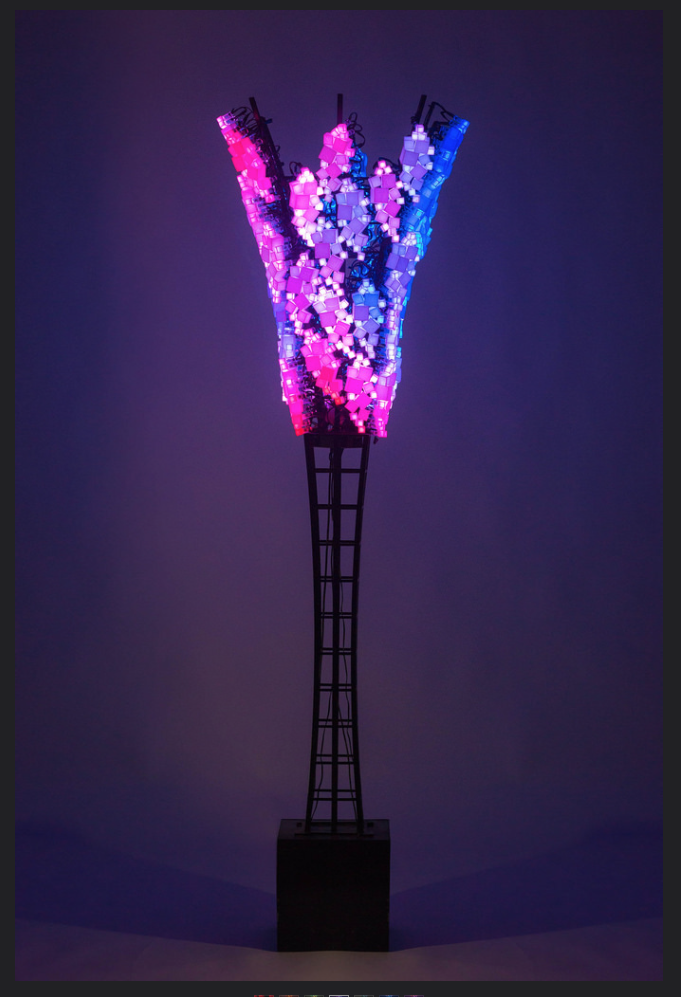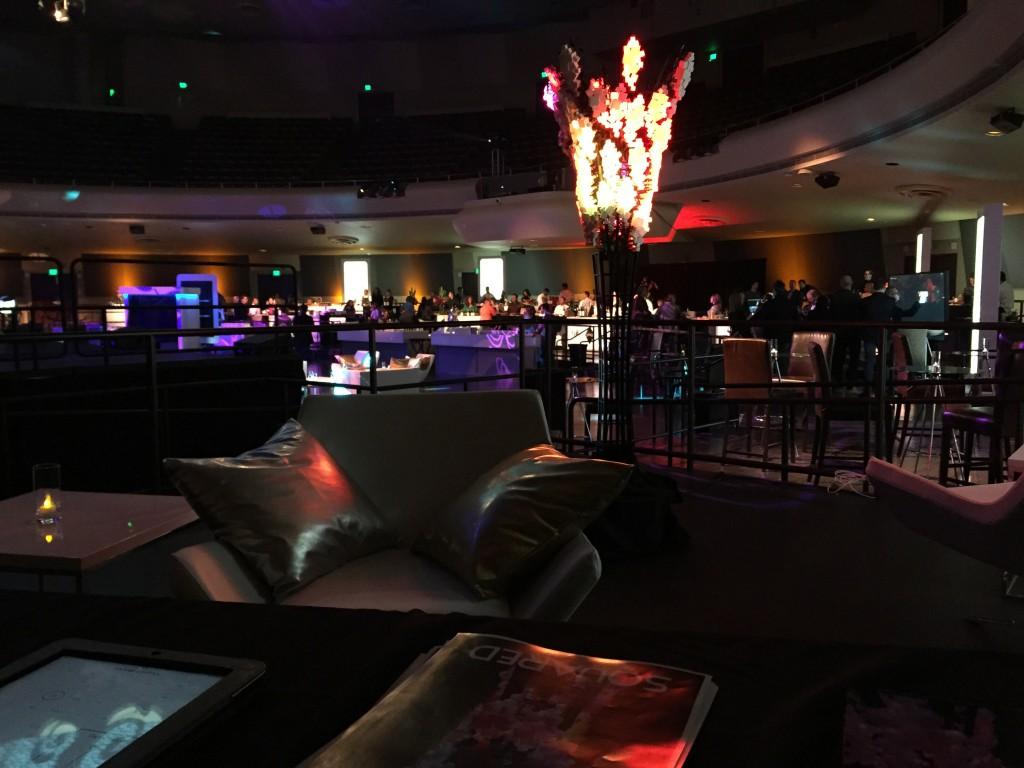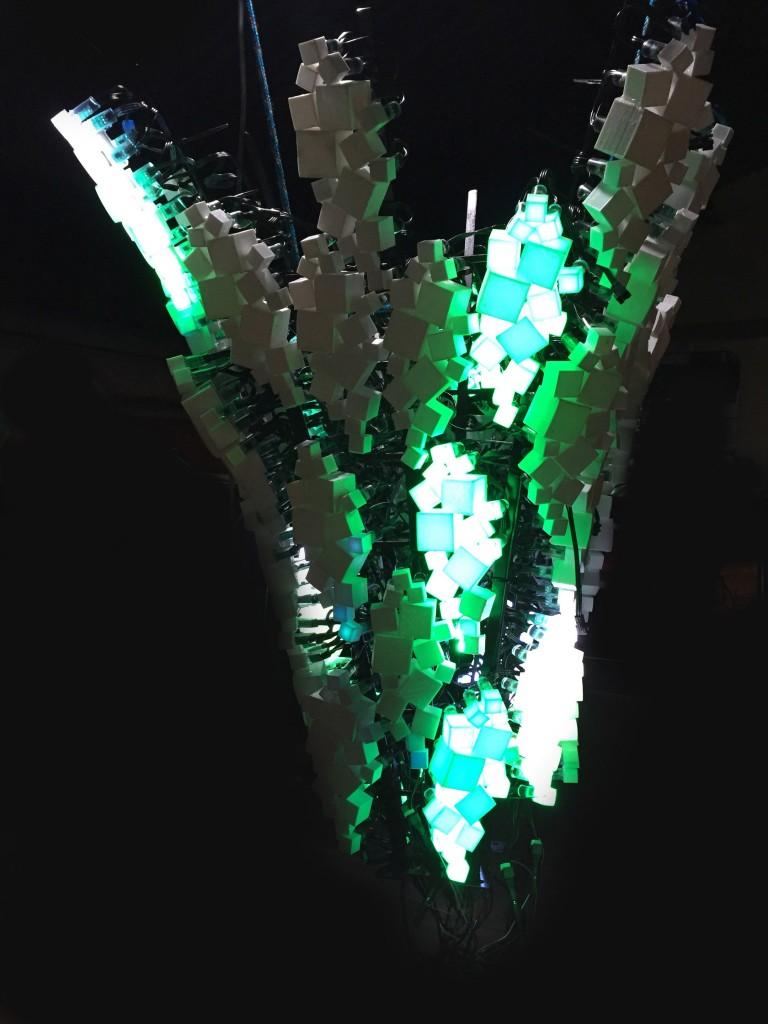 If you were at Burning Man or Coachella in 2014, you might have seen the 50ft Squared Tree. If you missed it there, perhaps you saw it at the San Mateo Maker Faire last weekend. However, if you have been unlucky enough to miss it at those venues, never fear, we have it here at 3Dprint.com. Or rather, we have a lot of pictures and the behind-the-scenes story.
If you were at Burning Man or Coachella in 2014, you might have seen the 50ft Squared Tree. If you missed it there, perhaps you saw it at the San Mateo Maker Faire last weekend. However, if you have been unlucky enough to miss it at those venues, never fear, we have it here at 3Dprint.com. Or rather, we have a lot of pictures and the behind-the-scenes story.
The installation at Burning Man stood 50’ tall and had a 30’ canopy made up of 800 cast polyurethane cubes with inset full-color LEDs. For Coachella, two trees were created comprised of steel trunks with 1,600 cubes and 30,000 individually addressable LED cubes in a fractal arrangement.
The 1:10 model for the 50ft Squared Tree, known as the 2SQUARED Mini, may be smaller in size, but it is no less impressive a feat. With 768 cubes, each lighted by a programmed RGB LED and controlled via WiFi by a custom created iPad app attached to a plasma-cut and welded metal tree trunk, the piece is truly breathtaking.
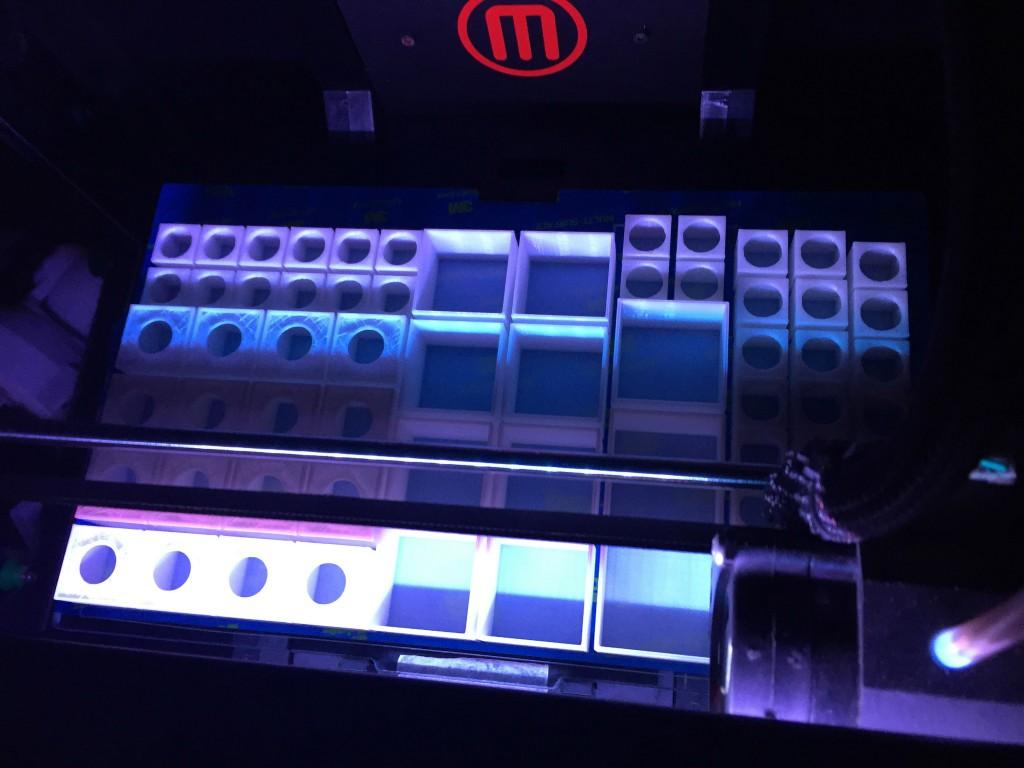 The project was facilitated by artist Charles Gadeken, a Bay Area artist who has been practicing professionally for 20 years. Gadeken is the founder of The Box Shop, a container-based community artspace and metal shop and home to over 40 artists and designers in San Francisco. Working with him on this project was Kyle Fleming, electronics and programming; Jessica Welz, metal fabrication; Drew McCord, 3D modeling and printing; and a group of about 15 volunteers who helped with the build itself.
The project was facilitated by artist Charles Gadeken, a Bay Area artist who has been practicing professionally for 20 years. Gadeken is the founder of The Box Shop, a container-based community artspace and metal shop and home to over 40 artists and designers in San Francisco. Working with him on this project was Kyle Fleming, electronics and programming; Jessica Welz, metal fabrication; Drew McCord, 3D modeling and printing; and a group of about 15 volunteers who helped with the build itself.
For the 2SQUARED Mini project, the team encountered its own set of challenges, not the least of which was the sheer number of cubes required. The metal trunk holds 48 clusters each with 16 FDM printed cubes. Gadeken described the various challenges they faced as part of the process:
“We went through a lot of different print iterations to get the best speed and quality since we had to print so many clusters. Initially, we tried printing each cluster as a single unit on the FDM printers, but the irregular angles of the clusters meant that the front facing cubes on the sculpture had a stepped/ridge finish which would not look good with the LED lights shining through them. Combine that with printing supports and each cluster took eight hours to print. Skip forward to our final solution, we got great results by printing all the cubes individually in batches of 48 cubes per print run with no supports required.”
Even so, each batch took 10 hours per print run, with two printers–a Type A Series1 and a MakerBot Replicator 2–running simultaneously. The 2” to 2 ½” cubes were printed in natural PLA to allow them to be translucent and at a .2mm layer thickness.
They weren’t finished once the print was done, as the piece still required a great deal of attention in order to become part of the finished product. Jigs were created using the 3D model of the assembled cluster by extrapolating the front face of each cluster down to a ground plane. Several of these jigs were created so that more than one team member could work on assembly at the same time. Each cube was placed on the jig individually and hot glued at its points of contact to create the 7” clusters.

“Once all the cubes were hot glued together,” Gadeken said, “the cluster was removed from the jig and set up on a table with two male supporting the underside of each cluster. Then two coats of epoxy were applied and once dry, half-inch drill bit was gently twisted in the LED whole by hand to remove the epoxy that had dripped in. The chains of 16 LEDs were inserted into the holes in the clusters were now ready to be hung and zip tied to the metal tree trunk.”
Gadeken’s faith in 3D printing was only further strengthened by his work on this project:
“There is always a way to make FDM printing work, just work with the design constraints of the printer. We tried so many different techniques but got there in the end, no matter how impossible it seemed in the beginning.”
Let us know what you think in the 2SQUARED Mini forum thread on 3DPB.com. Check out more photos below.
Subscribe to Our Email Newsletter
Stay up-to-date on all the latest news from the 3D printing industry and receive information and offers from third party vendors.
You May Also Like
3D Printing Unpeeled: New Arkema Material for HP, Saddle and Macro MEMS
A new Arkema material for MJF is said to reduce costs per part by up to 25% and have an 85% reusability ratio. HP 3D HR PA 12 S has been...
3D Printing News Briefs, January 20, 2024: FDM, LPBF, Underwater 3D Printer, Racing, & More
We’re starting off with a process certification in today’s 3D Printing News Briefs, and then moving on to research about solute trapping, laser powder bed fusion, and then moving on...
3D Printing Webinar and Event Roundup: December 3, 2023
We’ve got plenty of events and webinars coming up for you this week! Quickparts is having a Manufacturing Roadshow, America Makes is holding a Member Town Hall, Stratafest makes two...
Formnext 2023 Day Three: Slam Dunk
I’m high—high on trade show. I’ve met numerous new faces and reconnected with old friends, creating an absolutely wonderful atmosphere. The excitement is palpable over several emerging developments. The high...


